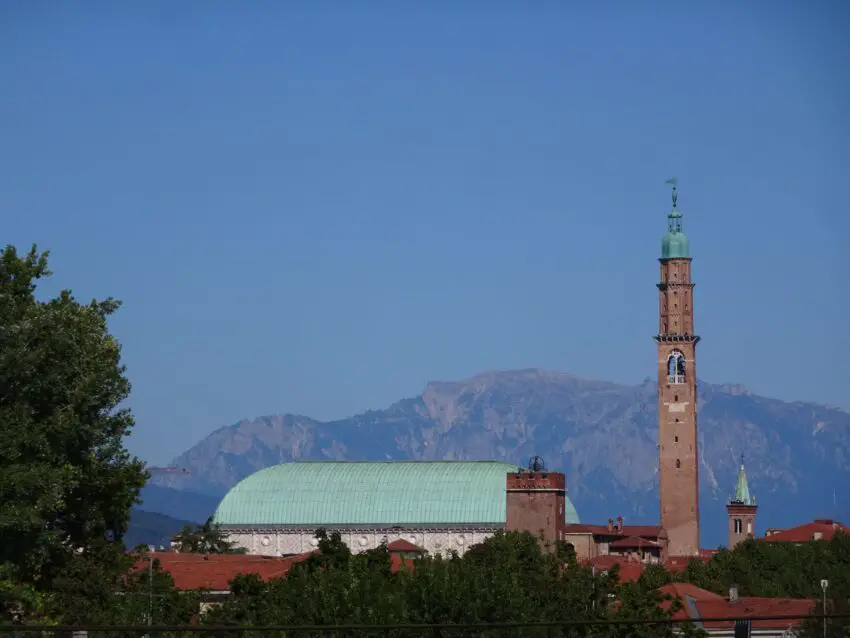Lying about halfway between the northern Italian tourist favourites of Verona and Padua, quaint Vicenza sees only a fraction of their visitor numbers but those travelers who decide to stop and check it out are in for a treat. The entire city is an architectural delight, thanks to the efforts of the immensely influential 16th century architect Andrea Palladio.
Inspired by classical Greek and Roman temple buildings, Palladio aimed to create the ideal city and judging by Vicenza’s impressive main thoroughfare, it looks like he mostly succeeded. Touches of beautiful Renaissance architecture can be found all over town in the form of impressive Palazzos and churches.
Add to that a couple of interesting museums and a great local cuisine and you’ve got yourself a prime destination that is still somewhat off the beaten path.

In 1994, a total of 23 Palladian Monuments were added to the UNESCO World Heritage List as “Vicenza, City of Palladio”. I’m an incurable completist and Stefanie thankfully is indulgent, so we’ve visited them all and can tell you exactly which of Palladio’s creations (as well as other places in the city) are worth checking out.
This post may contain affiliate links and I might earn a small commission at no additional cost to you. For more info click here.
Guided tours of Vicenza
One of the best ways to visit all the must-see sights in Vicenza would be to take a guided tour of the city. The great Vicenza 1 Day Experience includes all the most important places, like La Rotonda and the Teatro Olimpico and lets you choose from a selection of other sights to construct your own perfect itinerary. All entrance tickets and a guide for the entire tour are included.
Have a look for more cool experiences here:
The best things to see and do in Vicenza, Italy
Vicenza is all about the architectural marvels of Andrea Palladio and thus, almost all the places outlined below have at least some connection to the influential Renaissance master builder and are part of the UNESCO Site.
Teatro Olimpico
Arguably Palladio’s masterpiece, this theatre inspired by ancient Greek predecessors was begun in the 1580, shortly before the architect’s death. The way to the entrance leads through a gate in the Palazzo del Territorio (Where you’ll also find Vicenza’s tourist information) and through a pretty courtyard full of allegorical sculptures.

The interior is all the more striking by contrast. After traversing some relief-decorated vestibules and a corridor with signboards detailing the history of the building and the theatre troupe, you’ll enter the wonderfully intricate stage area.
As the theatre was opened with a performance of Sophocles’ Oedipus Rex, the stage scenery recreates the ancient Greek city of Thebes. The three-dimensional set manages to create the illusion of a long city street by using some tricks of false perspective, while the façade providing the stage background and the audience area is decorated with countless sculptures depicting the Vicenza’s nobility of that time.
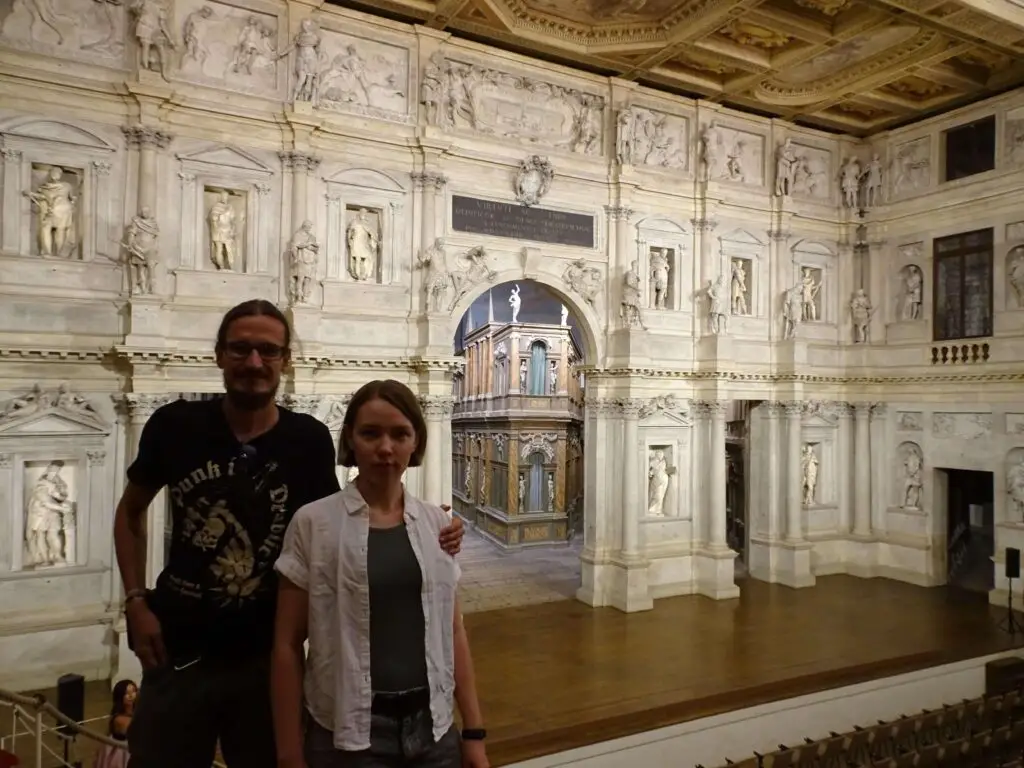
Every couple of minutes there’s a light-and-sound show well worth sticking around for, as it gives you the opportunity to check out the unusual illumination of the scenery devised in the 16th century.
The individual entrance fee is 11€. Check the opening times here.
La Rotonda aka. Villa Almerico Capra
Another of Palladio’s beautiful works, this Villa on the outskirts of town began construction in the 1570s. The building resembles a classical Greek Temple and was built with a completely symmetrical layout, fulfilling the architect’s desire for balance, inspired by the works of Vitruvius.

The central space is crowned by a cupola, whose interior is completely covered in intricate frescoes of mythological figures, while the lavishly furnished rooms all feature beautiful stuccowork and coffered ceilings. A pretty garden surrounds the villa and is a great place to kick back for a while.
The individual entrance fee is 10€. The Rotonda is only open from Friday to Sunday 10am to noon and 3pm to 6pm. You can double-check the opening times here.
If you’re in Vicenza on another day, the guided Vicenza 1 Day Experience lets you access La Rotonda even outside of the opening times.
Piazza dei Signori and the Basilica Palladiana
Vicenza’s main square is dominated by the Palladio’s impressive basilica. If you were expecting a church, you’re in for a surprise as this is a Basilica of the classical Roman terminology, i.e. a market hall and public meeting place. The lower porticoes are filled with traditional shops and cafés, while the ground floor on the interior holds a small exhibition space.
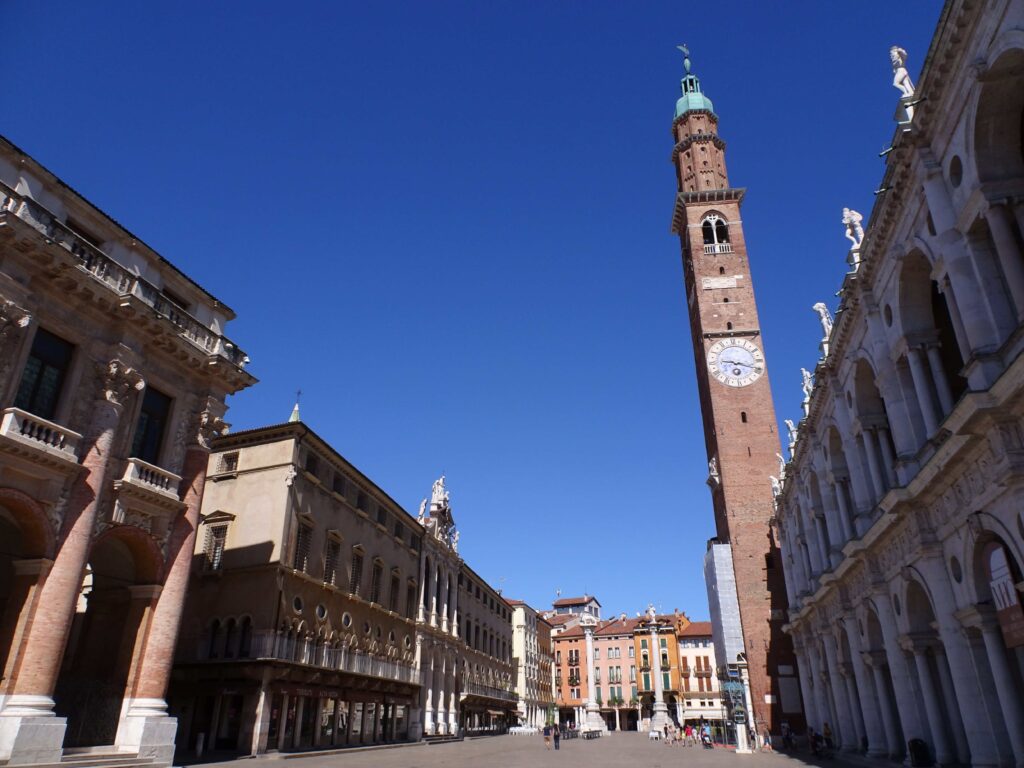
The vast hall on the upper floor is the star-attraction, though, and while it’s surprisingly austere, this only serves to heighten the sense of grandeur of the place. The eastern wall holds a somewhat lost looking golden Venetian Lion halfway up to the lofty carved ceiling.
The arcaded walkway running around the hall offers some great views of other architectural delights around the square, like Palladio’s Palazzo del Capitaniato with its impressive loggia, home to the city council or the baroque façade of the Chiesa di San Vicenzo. The Torre Bissara is one of Italy’s tallest clock towers and plays a special melody twice a day at the unusual times of 11:53 AM and 5:53 PM.
Entrance to the Basilica is 5€. Check the opening times here.
Corso Palladio and Piazza Castello
Corso Palladio, Vicenza’s pedestrian-only main thoroughfare runs from the Teatro Olimpico in the East to the Piazza Castello in the West. The latter is dominated by the medieval tower Torrione de Porta Castello, erected during the rule of the Scaligeri. Directly west are the Giardini Salvi Gardens with the pretty Loggia Valmarana looking out over a small canal.

Along the Corso you’ll find the highest density of architectural delights in town, including the Palladio-designed Palazzo Thiene, Casa Cogollo and Cà d’Oro. Make sure to check out the beautiful vine-covered courtyard of the latter. There’s also quite a few shops and cafés in the area, making it a great spot for a stroll.
Palazzo Chiericati and the Pinacoteca
This highly ornate building close to the Teatro Olimpico at the eastern end of the Corso Palladio holds the city’s biggest art collection. The colonnaded exterior, once again, resembles a Greek or Roman temple, while the interior rooms and hallways are decorated with beautiful frescoes and stuccowork.
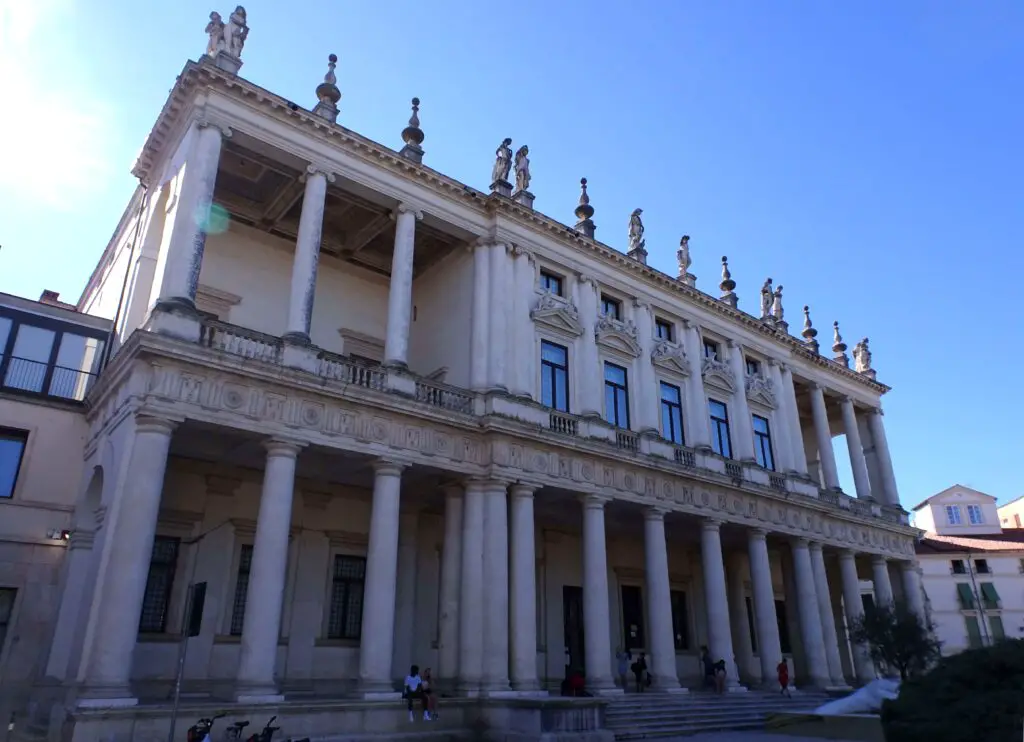
Inside are tons of paintings from medieval times up to the 18th century, including some beautiful works by Tintoretto, Giambattista Tiepolo and Jacopo Sansovino. In the basement you can have a look at the recently excavated original foundations of the building as well as the former servant’s quarters of the palace.
The individual entrance fee is 7€. Check the opening times here.
Museo Palladio in the Palazzo Barbaran da Porto
This Palace off the Corso Palladio holds a museum about the life and work of the famous architect. Designed by the man itself, the insides are ornately decorated and feature some pretty fireplaces as well as coffered ceilings with paintings of monumental battle scenes.

Apart from that, there are models of various local buildings Palladio designed and some interactive displays about architecture and aesthetics. The individual entrance fee is 8€. Check the opening times here.
Vicenza Cathedral
Santa Maria Maggiore might not be quite as impressive as the cathedrals in Venice or Verona but it’s still worth checking out for its airy interior with paintings by Veneziano and Montanga. The apse and dome don’t seem to fit the rest of the exterior, as they were added in the 16th century, while the rest of the building dates to the 13th century.
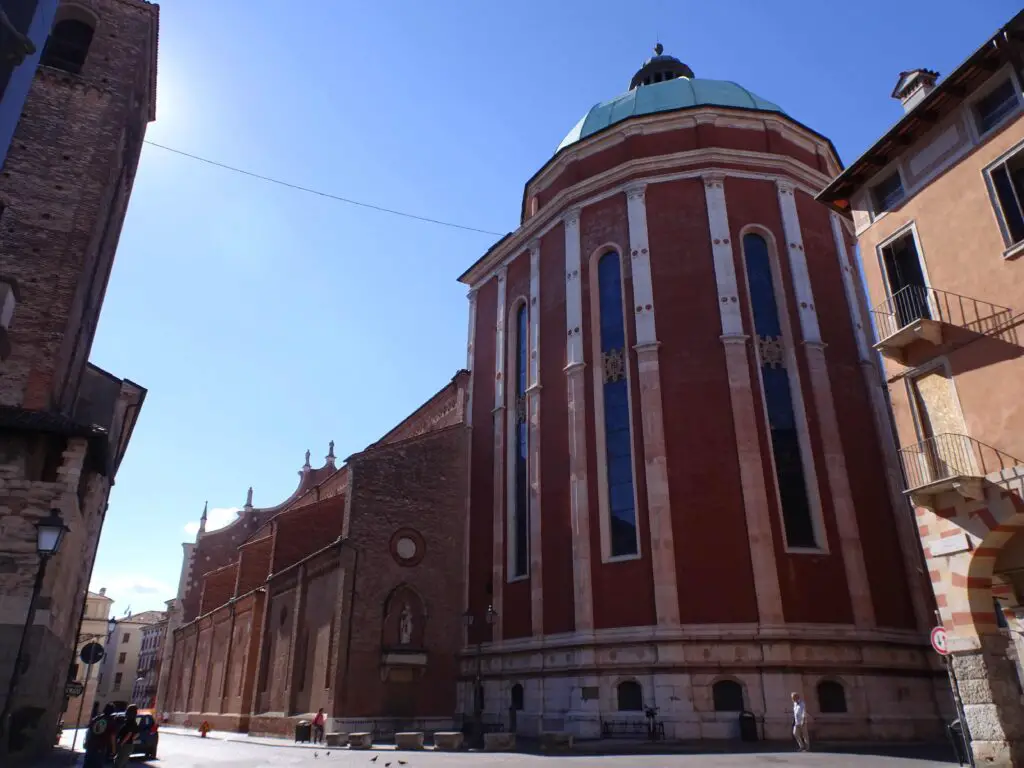
Once again, Palladio was at least partly involved by designing the cupola as well as the northern portal into the cathedral. The cathedral is open from Monday to Friday between 10.30 AM and noon and between 3.30PM and 5.30PM. On Saturday it’s only open from 10.30 AM to noon. There’s no entrance fee.
Parco Querini
The pretty Parco Querini, slightly north of the centre is not only a nice place to kick back for a bit but also home to an unusual amount of somewhat incongruous “wildlife”. Dozens of turtles swim around the small pond dominated by an island with a faux-Greek temple, which is also home to a couple of nutrias (aka. coypus).

While walking through the manicured grounds, you’ll also encounter countless rabbits hobbling around as well as some wild chickens. To get there walk north past the Palladio Museum and turn right after crossing the Bacchiglione River. The park is open from 8 AM to 6:30 PM from January to October and from 8 AM to 5 PM in November and December.
Palazzo Valmarana Braga Rosa and the UNESCO Centre
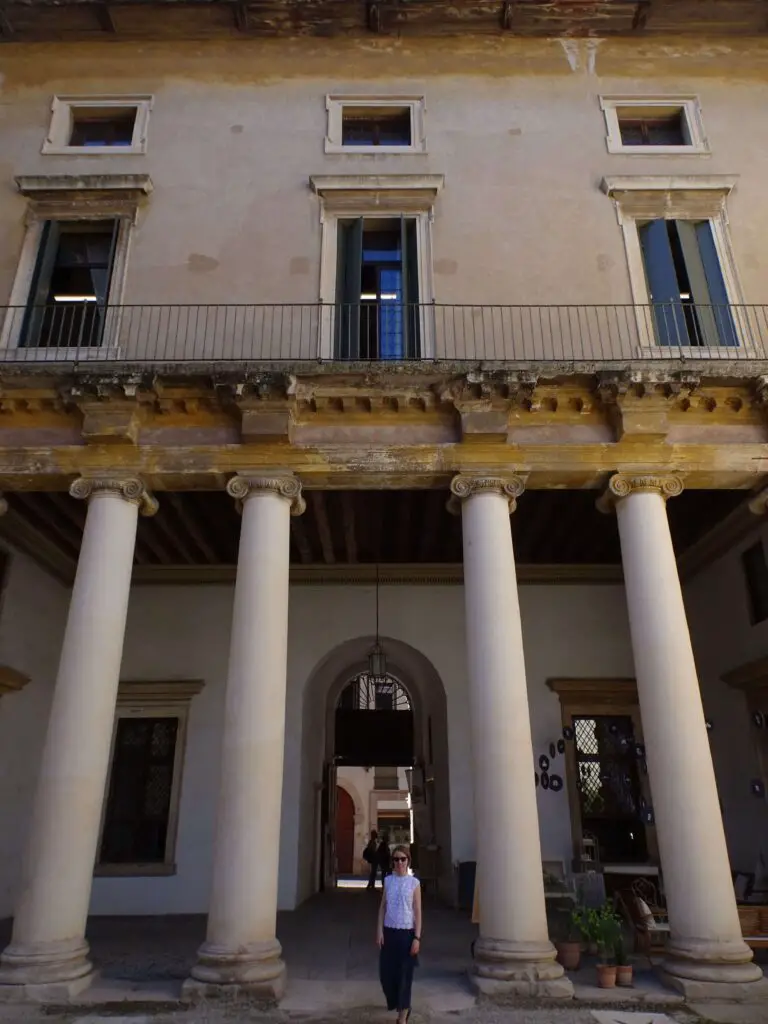

This unassuming palace off the Corso Palladio is home to the UNESCO Centre informing visitors about Vicenza’s heritage sites. Ask them to have a look in the small office in the back containing an ornately painted ceiling.
If you’re looking for a unique place to stay at, Palazzo Valmarana Braga also has luxury apartments for rent. I mean, how many people can say that they actually spent a night in a UNESCO-listed property?
Try Baccalà alla Vicentina

This famous dish, consisting of air-dried cod cooked with onions, sardines, milk and cheese and served with polenta can be found on Menus all over the Veneto Region but Vicenza is its hometown. There’s hardly a restaurant not serving it in town, but we tried it at Il Cursore, a cozy Osteria slightly south of the centre.
Exploring the surroundings of Vicenza
The towns and villages of the Vicenza-Region are dotted with countless palazzos and villas, many of them also designed by Palladio and part of the UNESCO Property. It’s worth taking a half day trip to get out in the beautiful countryside and visit a few of them. Another super cool place to explore would be the pretty Villa Zileri near Monteviale. Have a look at my guide:
Exploring Villa Zileri near Vicenza, Italy – One of the Veneto Region’s prettiest Villas
Vicenza Card and other combination tickets
Note that there are combination tickets to the museums that are well worth getting if you plan to visit a few. The Vicenza Card is 20€ and allows you to visit 11 sites, while with the 4 Museums Card for 15€ you can pick-and-choose four of those sites. The individual entrance fees of the sites vary greatly, so check them before you decide. The Teatro Olimpico should be the most expensive site included in any of the cards.
Map of Vicenza
The following map includes all the sights mentioned above as well as some potential places to lay your head.
Practicalities
How to get to Vicenza
Vicenza is located along the Verona – Venice train line and can easily be reached from both cities (Verona (about 40mins./6€); Venice (about 1h 15min./8€) as well as Padua (about 30mins./5€).
Where to stay in Vicenza
We stayed at Key Hotel Vicenza, which is slightly outside of the centre but has good rooms for pretty low prices. The only real budget option would be Ostello di Vicenza, which is located in the city centre and offers both private rooms and dorm-style accommodation.
At the upper end of the spectrum, the luxury apartments in Palazzo Valmarana Braga certainly would be the most unique place to lay your head. Have a look at the map above for more options.

Where to eat in Vicenza
Vicenza’s centre is chock-full of Osterias and Trattorias, so you won’t have trouble to find a place try some regional dishes. Apart from Osteria Il Cursore mentioned above, we tried Righetti near the Cathedral, which serves plenty of traditional Veneto dishes at very fair prices.
If you need a refuel in between sightseeing, we can really recommend the Antico Caffè Nazionale in the small passage directly south of the Museo Palladio. They have great coffee and snacks (try the Crostatini).
Where to go next
Verona, city of Romeo and Juliet
The beautiful Valpolicella Valley, the Veneto’s prime wine-growing region
Padua, Home to the oldest Botanical Garden in the World and some beautiful 14th Century Frescoes
